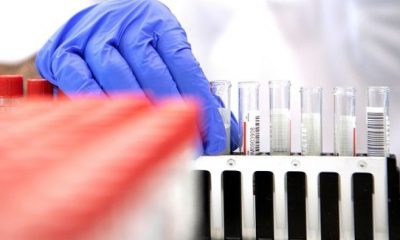Viruses have had a long association with the human genome. A new study suggests that the remnants of these ancient viruses may play a role in developing certain subtypes of autism.
As part of a study published in Molecular Psychiatry, researchers conducted experiments in mouse models, which found an association between endogenous viral elements and the development of idiopathic autism – autism with no known genetic or environmental cause,
The human genome is no stranger to viruses. It possesses sequences derived from viruses that infected our ancestors. These sequences, called endogenous retroviruses or ERVs, are present in about 8% of the human genome. These genetic elements stem from the ancestors of modern retroviruses like HIV.
However, ERVs lie dormant in the DNA, suppressed by the body’s regulatory machinery.
An international team led by researchers from Japan’s Kobe University found a possible correlation between ERVs and the development of autism.
Scientists worked on a mouse model of idiopathic autism. Following brain scans on two different but related strains of mice, called BTBR/J and BTBR/R, structural differences were observed in 33 brain regions. The difference was most pronounced in the corpus callosum – a clump of nerves connecting the two hemispheres of the brain, reported IFLScience.
Furthermore, the BTBR/R mice displayed significantly higher levels of ERVs compared to non-autistic mice. Genetic analysis hinted that these ERVs had been activated. This was due to a failure of the regulatory mechanisms that usually keep ERVs quiet in the genome, the study authors wrote. Moreover, they found the activation caused an increase in copy number variants or CNVs. These are repeated genetic sequences that vary in number between individuals in autistic mice.
The study concluded that ERV activation during fetal development may be the reason for the increased risk of developing autism.
Behavioral tests were conducted on the two groups of autistic mice. It was found BTBR/R mice exhibited less anxiety than the BTBR/J mice. But they also performed on par with neurotypical mice in a maze test, suggesting they have a near-typical level of spatial learning ability.
However, the BTBR/R mice also displayed more repetitive behaviors and less inclination to social interaction with other mice. These patterns are called the “core symptoms” of autism.
What stood out in the study was that the BTBR/R mice with more of the classical autistic behavioral traits had a typical corpus callosum, their brain scans revealed.
Based on the results, researchers are of the opinion that BTBR/R, which is the less popular mouse model, may be a more accurate representation of idiopathic autism.
“Taken together with the demonstrated roles of ERV in CNV formation, our observation of the two BTBR strains provides a vivid model to describe how the genome evolves toward [autism] susceptibility,” the researchers added.
















